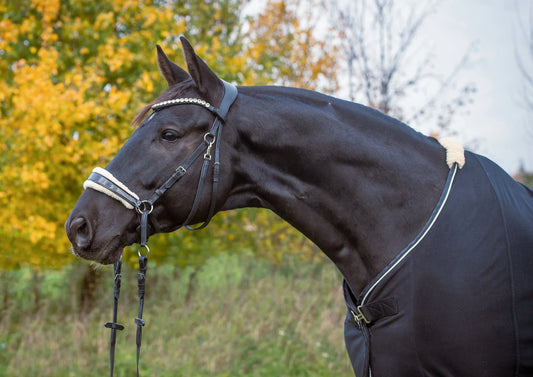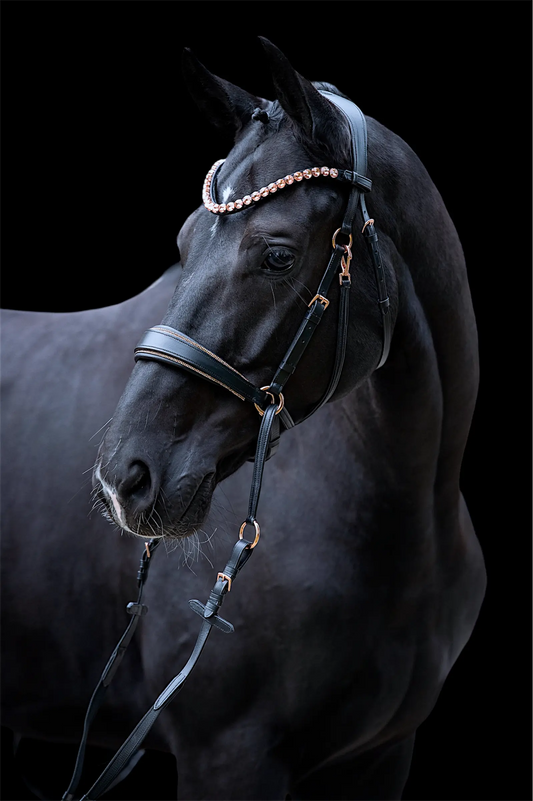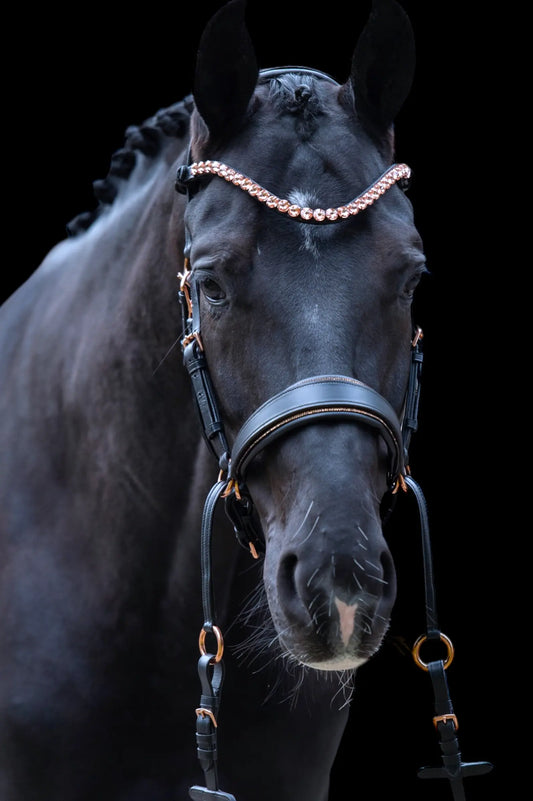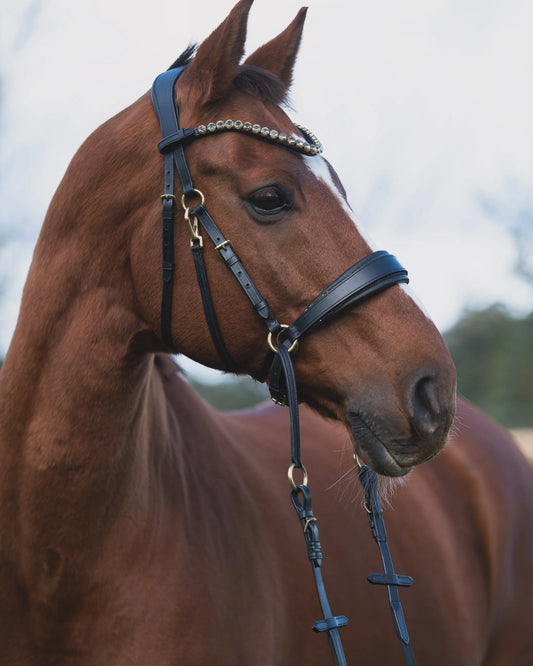Horse Bridle Guide: How to Choose the Best Fit for Your Horse
Share
Choosing the right horse bridle can be overwhelming, but getting the perfect fit is crucial for your horse's comfort and control. A horse bridle is more than just equipment; it is the primary communication tool between rider and horse. Understanding the different types of bridles, their parts, the materials used, and proper fitting techniques can enhance your riding experience and keep your horse happy. This comprehensive horse bridle guide will walk you through everything you need to know, from the basics of horse bridle components to tips on maintenance and care.
Understanding the Essential Parts of a Horse Bridle
Key Components Explained
Every horse bridle consists of several important parts that work together to offer control, safety, and comfort. Knowing these parts will help you choose a bridle that suits your horse’s head and your riding style. The main parts include:
- Crownpiece: The strap that goes over the horse’s poll, supporting the entire bridle.
- Browband: Runs across the horse’s forehead, preventing the bridle from slipping backward.
- Cheekpieces: Connect the crownpiece to the horse bridle bit, holding the bit in place inside the mouth.
- Horse bridle bit: The metal piece inside the horse’s mouth, providing cues from the reins.
- Horse bridle reins: Attached to the bit, reins allow the rider to steer and signal the horse.
- Noseband: Encircles the nose and adds control; common types are cavesson, flash, or figure-eight.
- Throatlatch: Prevents the bridle from slipping off by securing under the throat.
Optional Horse Bridle Accessories
Horse bridle accessories like bit guards, curb chains, and different rein styles can enhance function and comfort, depending on your riding discipline and your horse’s needs.
Types of Horse Bridles and Their Uses
English vs Western Bridles
Horse tack bridles come in many styles, the most common being English and Western bridles. English bridles usually include a noseband and are used in disciplines such as dressage, eventing, and show jumping. They often have options for snaffle or double bits. Western bridles tend to be simpler, sometimes without a noseband or browband, emphasizing durability and ease of use during ranch work or trail riding.
Specialty Bridles
Specialty bridles include bitless bridles, hackamores, and halter bridles. Bitless bridles use pressure points on the nose instead of a bit, often preferred for sensitive horses or trail riding. Halter bridles combine elements of a halter and a bridle for versatility, especially in endurance riding.
Materials: Choosing Quality Horse Bridle Leather and Alternatives
Horse Bridle Leather Quality
Horse leather bridles are prized for their durability and classic appearance. Premium horse bridle leather is typically vegetable-tanned, offering flexibility, strength, and the ability to be conditioned over time to maintain suppleness. High-quality stitching and hardware (buckles and rings) also contribute to the longevity of a leather bridle.
Other Materials and Their Benefits
Alternatives like synthetic leather, nylon, or biothane bridles have become popular due to low maintenance, water resistance, and affordability. Each material has pros and cons, but ensuring the bridle fits well and is comfortable for the horse remains a priority regardless of material.
How to Properly Fit a Horse Bridle
Step-by-Step Fitting Guide
Proper fit is essential to avoid discomfort or injury. Follow these steps for fitting a horse riding bridle:
- Position the crownpiece over the poll comfortably, behind the ears.
- Adjust cheekpieces so the bit rests gently on the horse’s bars without pulling or pinching lips.
- Ensure the browband lies flat without pinching behind the ears.
- Fasten the throatlatch so it’s snug but allows room for three to four fingers underneath.
- Adjust the noseband to fit properly — tight enough to keep the mouth closed but loose enough for comfort.
- Reins should be easy to grip and connected securely to the bit.
Tips for Different Horse Head Shapes
Horses with different head sizes or shapes, such as wide foreheads or delicate muzzles, may require custom-fit bridles or specific noseband styles. Always reassess the fit regularly as your horse matures or its shape changes.
Maintaining Your Horse Bridle: Care and Cleaning Tips
Routine Maintenance
To keep your horse bridle leather in excellent condition, clean it regularly using saddle soap and a damp cloth to remove dirt and sweat. After cleaning, apply leather conditioner to maintain suppleness and prevent cracking.
Storage and Inspection
Store your bridle in a cool, dry place away from direct sunlight. Regularly inspect stitching, buckles, and horse bridle accessories for wear or damage to ensure safety during riding.
Combining a Horse Bridle and Halter for Versatility
Why Use Both Together?
Some riders use a horse bridle and halter together for convenience and safety. While the bridle is used during riding, the halter can remain on for handling during breaks, grooming, or tying. This setup ensures quick transitions and protects your horse.
Choosing Compatible Bridle and Halter Sets
When choosing a horse bridle and halter, consider matching materials and sizes to ensure comfort. Many manufacturers offer coordinated sets that complement each other in style and function.
In summary, selecting the right horse bridle involves understanding its parts, types, and the materials used. Proper fitting is key to your horse's comfort and communication, while regular maintenance ensures durability. Whether you prefer traditional horse bridle leather or synthetic options, this guide equips you with essential knowledge to make the best choice. Explore our selection of quality horse bridles and accessories to find the perfect fit for your horse and riding style.




